5 Video Game Series That Had Weird Moments Everyone Forgets
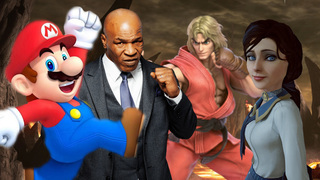
Movie and TV shows get flack for going forward "without a plan," but video games don't even pretend to have a plan. They just hurtle forward as technology evolves, picking up weirdness purely as a consequence of overworked computer parts squealing out coil whine. And then everyone moves on, quickly forgetting how ...
Mario Was The Villain In His Second Game
Before beloved plumber Mario was Mario, he simply went by the name of "Jumpman," because his debut game Donkey Kong is believed to be the first ever game where your character jumps. Jumpman's pet gorilla Donkey Kong has kidnapped Jumpman's girlfriend (originally simply named "Lady"), and it falls upon the overall-wearing carpenter to climb up and save her, in a story Nintendo claimed was absolutely not a rip-off of King Kong. (Universal Pictures disagreed about that last part and sued.) But Nintendo prevailed, in part because Universal had themselves earlier argued King Kong was public domain so they could freely remake the original 1933 film.
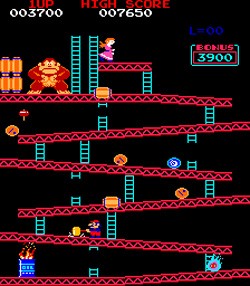
So, that was Donkey Kong, the first Mario game. The third Mario game follows up that premise with you taking control of the character to fight mutant turtles from New York's sewers (this was not a rip-off of Ninja Turtles, which had debuted the previous year). But the second Mario game put you in control of someone else entirely. You played Donkey Kong's son, and your goal was to free your father from the evil Mario who had captured him. 1982's Donkey Kong Jr. was a huge hit. It started out as an arcade game then went to the NES and even the greatest of all consoles, the Nintendo Game & Watch.

You will find Donkey Kong Jr. for the Game & Watch shockingly primitive if you have played any game created since then. You will find Donkey Kong Jr. for the Game & Watch shockingly primitive if you have played any game created before then. Even the arcade games of the '80s had you play through a variety of stages with shifting challenges, but not Donkey Kong Jr. for the Game & Watch. The level was printed statically on the screen, you would simply sprint to the same vine every time before the snapjaws come for you, and then you'd jump for a key -- then repeat, hour after hour, on a pair of lithium batteries that lasted for years.
Nintendo was a long time away from creating "Mario but evil" in Wario, or "Mario but evil and sexy" in Waluigi, so Mario had to be the bad guy in this game, the only time he'd ever play the villain. This also happened to be the first game where the character was actually called "Mario" rather than "Jumpman," so you might even say that Mario played a villain in his first appearance. This is one Nintendo fact that troubles fans to this day, along with the mystery of how, if he wears overalls all the time, Mario is ever supposed to flash some decent plumber's crack.
Ken From Street Fighter Became A Cyborg Because Capcom USA Were Idiots
1987 gave us groundbreaking fighting game Street Fighter, soon to be followed up by groundbreaking 1991 fighting game Street Fighter II. But between the two came a spinoff that went by the name Street Fighter 2010: The Final Fight, even though it did not release in 2010, was not the final Street Fighter game, and was actually not a fighting game at all. An action side-scroller, Street Fighter 2010 was a different genre from the original and also had a different story, different characters, and took place in a different time period. The only arguable connection to the original was that you play a street fighter -- not an entrant in street fighting competitions, but you do fight, in locations that occasionally include streets.
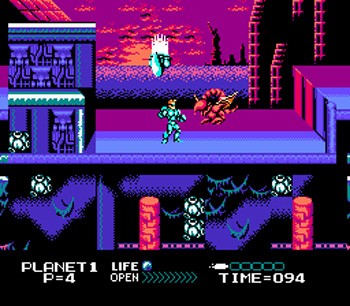
If all this sounds like a slipshod game slapped with the Street Fighter label because it had nothing to offer of its own, I've done a bad job setting this up. 2010 actually had a plot, one that's more complicated than you'd find in any game consisting entirely of one-on-one dojo matchups. Like the name suggests, 1990's Street Fighter 2010 takes place 20 years in the future. People have started augmenting themselves with cyborg parts (so humans can expand to other worlds), but other people have gained powers by being taken over by alien parasites. You play as Kevin Straker, a cyborg policeman who travels to five different planets to defeat those whom the parasites control. Finally, you end up facing off against a doctor who reveals the parasites aren't aliens at all but instead are an invention of his -- and you are actually one of them, created to help him take over the world.
At least, that's the story of the original Japanese version. When it came over to the US, Capcom America noted (correctly, to be fair) that none of this had absolutely anything to do with Street Fighter. So, when it came time to translate everything to English, they changed the main character to Ken from the original game.
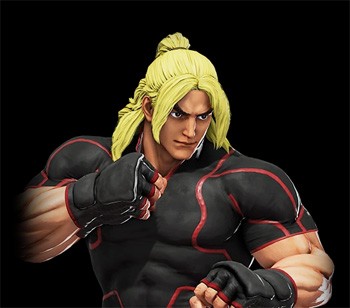
What is Ken doing in the year 2010? Well, after he won the Street Fighter tournament (a tournament that the first game said Ryu won, but whatever), he quit fighting and went to college. It's 25 years later in 2010, and it seems Capcom feared that would make him too old to be a cop, so they turned him into a scientist. As for the twist that the character you're playing was actually a parasite created by a 21st-century mad doctor, there was no way to make that work, so they just dropped it.
Of course, none of this in any way fits with later Street Fighter games that came out, so official Street Fighter literature (which is something that definitely exists) refer to 2010 as happening in a parallel universe. There's no arguing with that explanation. I encourage you to use it when anyone grumbles about plot holes anytime in the future.
Sub-Zero From Mortal Kombat Had His Own Dumbass Action Adventure
Street Fighter wasn't the only fighting series that had a random non-fighting spinoff. In 1997, just before Mortal Kombat 4 came out, PlayStation and Nintendo got an action-adventure called Mortal Kombat Mythologies: Sub-Zero. It's all about the original Kombat character Sub-Zero, also known as Bi-Han. The name "Sub-Zero" also sometimes refers to a different character named Noob Saibot, because "noob" didn't yet mean what it now means, and because video game lore is needlessly complicated.
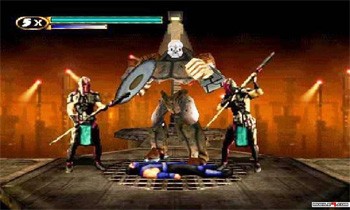
In 1997, I did not play Mortal Kombat Mythologies: Sub-Zero. Nor have I played it in the years since. But in 1997, I did edit a magazine that featured the official comic adaptation of Mortal Kombat Mythologies: Sub-Zero -- and by "official," I mean "of course it wasn't official; everyone involved in the production of this magazine was ten years old." The Sub-Zero comic, like all comics in our hand-drawn magazine, ended with every character abruptly dying. That even went for characters who also appeared in different stories in the same issue, where they also abruptly died, in a totally different way. Probably, this had something to do with parallel universes.
That comic didn't give me a good idea of the real story of Mortal Kombat Mythologies: Sub-Zero. Luckily, we don't need to play it today to experience some of it. The game came with live-action cut-scenes ("full-motion video," to use the parlance of the day), and you're welcome to watch all twelve-odd minutes of them. For Sub-Zero, we have an actor who voiced the part in several other games and also nabbed the breakout role of "Chechen's Bodyguard (uncredited)" in The Dark Knight. Behold, as he imitates the stiff movements of late '90s game animation, to smooth the transitions between live-action and video game:
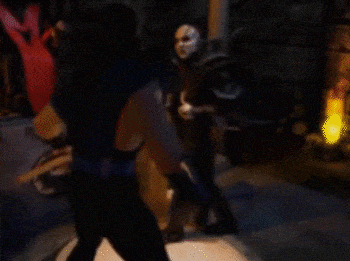
We also have special effects every bit as good as the '60s Batman show:

"But is there time for boobs and butts in leather?" you ask. Of course there's time for boobs and butts in leather.
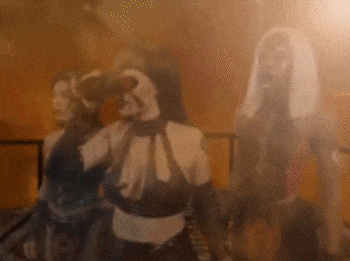
As for the story, well, our hero Sub-Zero must defeat a bunch of gods, gets betrayed by a sorcerer, then must fight his way through the underworld. And in the end, he's hired by a new sorcerer, to fight in a tournament ... called Mortal Kombat.
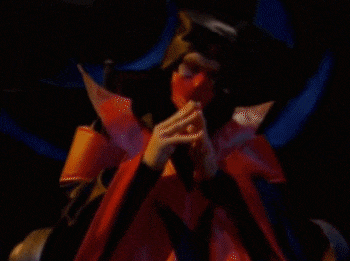
That's the end. Except of course for the minutes of bloopers in which the actors giggle in front of green screens.
Nintendo's Weird Relationship With Pro Athletes In Its Early Games
Licensing real players in sports games costs a lot, but it means massive profits with very little effort. With a license in hand, you can rerelease the same game year after year changing just the title, slap in full-length ads, include pseudo-gambling mechanics, include actual gambling mechanics, stage real-world daring heists to steal the nation's gold reserves, etc., and players will still buy your product. But 1983 was a simpler time in gaming. For their straightforward boxing game Punch-Out!!, Nintendo managed to license just a single real-world boxer -- and they couldn't license him for very long.
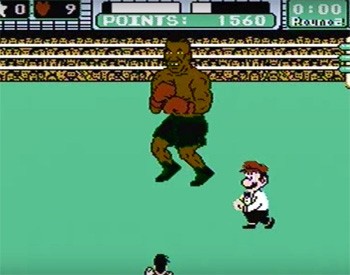
Oh, the boxer they got was no lightweight. He was Mike Tyson, a big enough star to sell the whole game under the name Mike Tyson's Punch-Out!! at first. And yet he was the final boss in a game that otherwise had you fight totally fictional enemies like Great Tiger (who can teleport, using the power of being Indian) and Soda Popinski (renamed from "Vodka Drunkenski," due to gaming's growing realization that we need better representation for Russians). The referee was noted Nintendo icon Jumpman -- known as "Mario" by fake gamers -- in all these matches, even the final fight against real-life boxer Tyson.
Until Nintendo's license expired, that is. In 1990, when they reissued the game, they had to rename it simply Punch-Out!!, and they reskinned Iron Mike into a new character called Mr. Dream. Apparently, no one told the actual Mike Tyson this. Thirty years later, with the Mike-less game ported over to the Switch, Tyson thought they were putting out a new installment that totally should have included him:
The NES also had a baseball game that featured exactly one real player. Ken Griffey Jr. Presents Major League Baseball had real stadiums, and real teams, but no real humans other than Ken. It had the Red Sox, featuring Sam Malone from Cheers, who used to pitch for the Sox on that show ... and also Norm Peterson and Cliff Clavin, who most definitely did not used to pitch for the Sox on that show.
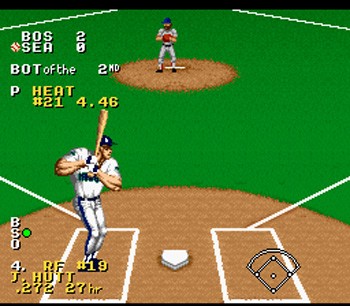
The Royals appear in the game, with players Ronald Reagan and Bill Clinton, while the Cincinnati Reds roster is full of authors like Ian Fleming and Philip K. Dick. The Detroit Tigers somehow have Aretha Franklin and Gladys Knight pitching, while the Phillies have Rocky Balboa and Apollo Creed. It's all very strange, until you remember that parallel universes mean everything is possible.
By The Final BioShock Story, Every Main Character Has Committed Suicide In Every Possible World
We're going to jump forward a couple decades now, because that's how long the gaming industry took to come up with a multiverse as weird as the one created by Ken Griffey Jr. Presents Major League Baseball.
The 2013 game BioShock Infinite ended confusingly, the sort of ending that sets up a cottage industry of "the ending explained" internet articles. Your character, Booker, learns that when he got baptized years ago in a failed quest for redemption, he created an alternate universe where he became an evil dictator. With the help of a timeline-hopping multiverse woman Elizabeth, he now chooses to travel back to that baptism and drown. This kills both Booker and evil-Booker -- or rather, innumerable Bookers and innumerable evil-Bookers because far more than two universes are at play here.
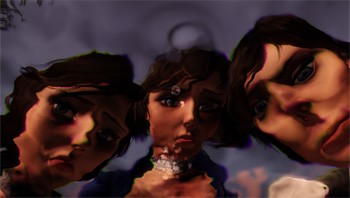
An atmosphere of heroic sacrifice surrounds this, but redemption is judged to be completely impossible, with suicide the only solution. This is very moving, and very depressing. Still, the game ends with Elizabeth still alive, and there's even a post-credits teaser that the two might be together in some other world, somehow.
To know what happens next, you'd have to play BioShock Infinite: Burial at Sea. Many people did not play BioShock Infinite: Burial at Sea, because to withhold spoilers, it was advertised as a goofy "what if?" side story -- what if Booker and Elizabeth were noir detectives back in Rapture, the undersea city from the original BioShock? But it's a direct canon continuation of the BioShock plot. After the drowning, Elizabeth has traveled back to Rapture to kill one last evil Booker. In the process, she also ends up nearly killing one of the little girls there, so she spends the rest of the game feeling deeply guilty.
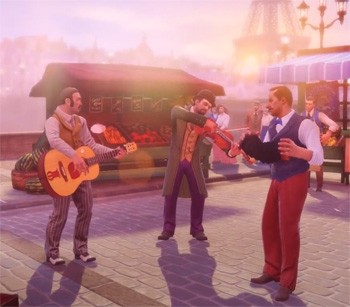
By the end of it all, Elizabeth does manage to save the girl. She also gives up on life. She asks the bad guy from the original BioShock game to kill her. And this isn't some battle, where he's roided up with sci-fi drugs and unstoppable. He's just a guy, and she by this point has the power to turn invisible and escape anyone, freeze everybody, possess people and make them kill themselves, and more. But no, she sits back and asks to die.
Yeah, she chooses suicide. But it's worse. At the end of Infinite, we saw Elizabeth existing in various forms in various realities, but by this game, they have all collapsed into a single person. So, she is killing herself in all possible universes. Clearly, the writer of the game saw that if someone else ended up owning the franchise, he wanted to make writing a sequel as hard as humanly possible.
Follow Ryan Menezes on Twitter for more stuff no one should see.